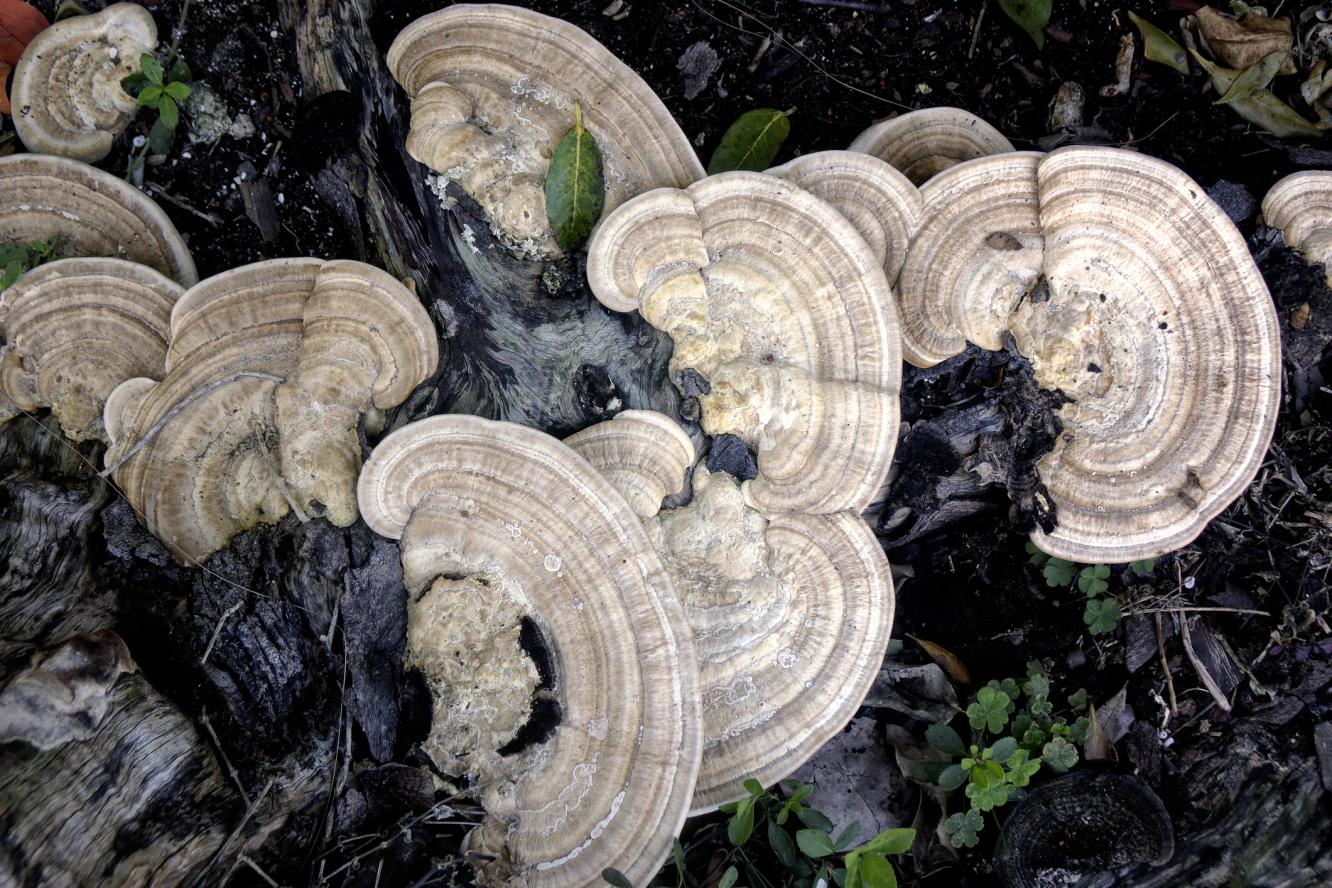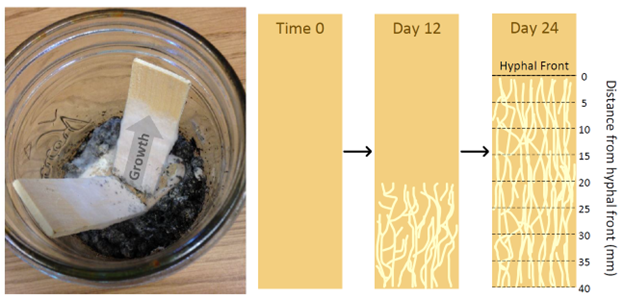Functional and Systems Biology
Metabolomics Reveals Strategic Wood Degradation by Rot Fungi
Metabolomics analysis revealed differences in the metabolically produced compounds for two distinct modes of fungal wood decay.

A multi-institutional team of scientists used mass spectrometry-based metabolomics techniques to compare compounds produced during metabolic degradation by brown and white fungi. (Photo provided by iStock)
The Science
Earth’s largest pool of aboveground biotic carbon and an important natural storehouse is lignocellulose in wood. White and brown rot fungi both degrade lignocellulose but do so in different ways. A new multi-institutional study using mass spectrometry-based metabolomics techniques in thin wood wafers compared the compounds produced during metabolic degradation by these two different groups of fungi. Two stages of wood decay, earlier and later, were studied. Distinct metabolome profiles were captured from the two different wood rot decaying types, and each showed a strong dependency with the type of wood rot decay and stage of decay. The authors suggest this likely reflects different life history strategies that are tailored for different environments because of competition for resources.
The Impact
Despite the ecological and economic importance of wood-degrading fungi, little is known about the array of metabolites that fungi produce during wood decomposition. In a new study, a multi-institutional team of scientists provides in-depth insight into the wood decomposition process by comparing the metabolome of brown and white rot fungi, which have two distinct nutritional modes. The authors found a unique pattern of metabolites that correlated with brown rot in later decay. These compounds were in line with some of the physiochemical and genetic features previously seen in these fungi. This research provides insight into decay mechanisms and establishes critical groundwork for studies in basic biology and ecology.

Summary
White and brown rot fungi are well known for degrading the lignocellulose within wood, but the details by which each degrade wood are not well understood. Now, a multi-institutional group of researchers compared the metabolic products from these two different types of fungi “in planta” (in solid wood wafers in this case). The metabolite patterns that they found showed a dependency with the type of wood rot and the stage of decay; late brown rot decay produced the most identifiable signature. Overall, white rot fungi showed a higher capacity to release sugars early. However, this capacity did not increase at later decay stages. In contrast, brown rot fungi were not able to release a lot of sugars from the wood substrate early during decay, but at later stages showed a very sharp increase in the amount of released sugars. These differences likely reflect different life history strategies for these two types of fungi, which are tailored for different environments. The metabolome profiles of two different modes of fungal wood degradation were characterized by the mass spectrometry-based metabolomics capability available at the Environmental Molecular Sciences Laboratory, a Department of Energy, Office of Science user facility located at Pacific Northwest National Laboratory in Richland, Washington.
Contact
Young-Mo Kim, Pacific Northwest National Laboratory
young-mo.kim@pnnl.gov
Funding
The research was funded by grants from the Department of Energy, Biological and Environmental Research program. A portion of the research was performed on a project award from EMSL.
Publication
Castano Uruena J.D., N. Munoz-Munoz, Y. Kim, J. Liu, L. Yang, and J.S. Schilling. 2022. "Metabolomics highlights different life history strategies of white and brown rot wood-degrading fungi." mSphere 7, doi:10.1128/msphere.00545-22.

